Oxidation without clevage of sigma bond takes place in alkenes.

Presence of unsaturation in alkenes is detected by using Baeyer's reagent. Alkenes decolourise pink colour of Baeyer's reagent. In presence of Baeyer's reagent, 'syn' addition of -OH groups takes place on both carbons of double bond. The net reaction can be given as,
R−CH=CH−RKMnO4−−−−→OH−R−OH∣CH−OH∣CH−R
Ozonolysis of alkenes gives ozonide, which on further hydrolysis gives aldehyde and/ or ketone.
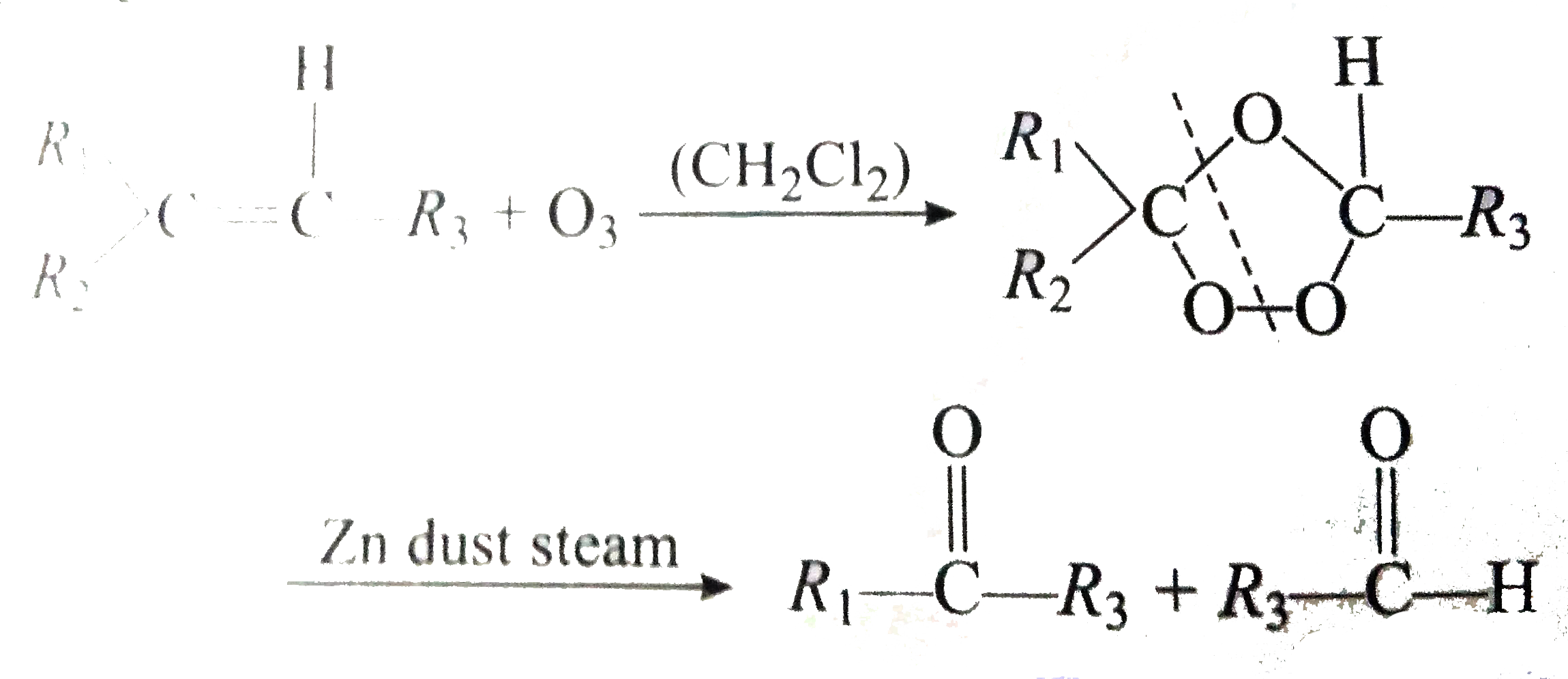
ortho Xylene on reductive ozonolysis will be:
CHO−CHO and CH3−O∣∣C−CHO
CH3−O∣∣C−O∣∣C−CH3 and CH3−O∣∣C−CHO
CH3−O∣∣C−O∣∣C−CH3 and CHO−CHO
CH3−O∣∣C−O∣∣C−CH3 nad CH3−O∣∣C−CHO and CHO−CHO
The correct Answer is:D
Step by step video, text & image solution for Oxidation without clevage of sigma bond takes place in alkenes. Presence of unsaturation in alkenes is detected by using Baeyer's reagent. Alkenes decolourise pink colour of Baeyer's reagent. In presence of Baeyer's reagent, 'syn' addition of -OH groups takes place on both carbons of double bond. The net reaction can be given as, R-CH=CH-R overset(KMnO_(4))underset(OH^(-))to R-overset(OH)overset(|)(CH)-overset(OH)overset(|)(CH)-R Ozonolysis of alkenes gives ozonide, which on further hydrolysis gives aldehyde and/ or ketone. ortho Xylene on reductive ozonolysis will be: by Chemistry experts to help you in doubts & scoring excellent marks in Class 12 exams.
Topper's Solved these Questions
- BOOK - OP TANDONCHAPTER - UNSATURATED HYDROCARBONSEXERCISE - SINGLE INTEGER ANSWER TYPE QUESTIONS10videos
UNSATURATED HYDROCARBONS
- BOOK - OP TANDONCHAPTER - UNSATURATED HYDROCARBONSEXERCISE - MATRIX MATCH TYPE QUESTIONS:6videos
UNSATURATED HYDROCARBONS
- BOOK - OP TANDONCHAPTER - STOICHIOMETRY (CHEMICAL FORMULAE AND EQUATIONS )EXERCISE - SELF ASSESSMENT11videos
STOICHIOMETRY (CHEMICAL FORMULAE AND EQUATIONS )
Similar Questions
CH3−CH∣CH3−CH=CH−CH2−O∣∣C−OH
View SolutionOxidation without clevage of sigma bond takes place in alkenes.

Presence of unsaturation in alkenes is detected by using Baeyer's reagent. Alkenes decolourise pink colour of Baeyer's reagent. In presence of Baeyer's reagent, 'syn' addition of -OH groups takes place on both carbons of double bond. The net reaction can be given as,
R−CH=CH−RKMnO4−−−−→OH−R−OH∣CH−OH∣CH−R
Ozonolysis of alkenes gives ozonide, which on further hydrolysis gives aldehyde and/ or ketone.

Answer the following questions:
Liner polyenes on ozonolysis gives two moles of acetaldeyde and one mole of propanedial. Linear polyene will be:View Solution
Knowledge Check
- Question 1 - Select One
Oxidation without clevage of sigma bond takes place in alkenes.

Presence of unsaturation in alkenes is detected by using Baeyer's reagent. Alkenes decolourise pink colour of Baeyer's reagent. In presence of Baeyer's reagent, 'syn' addition of -OH groups takes place on both carbons of double bond. The net reaction can be given as,
R−CH=CH−RKMnO4−−−−→OH−R−OH∣CH−OH∣CH−R
Ozonolysis of alkenes gives ozonide, which on further hydrolysis gives aldehyde and/ or ketone.
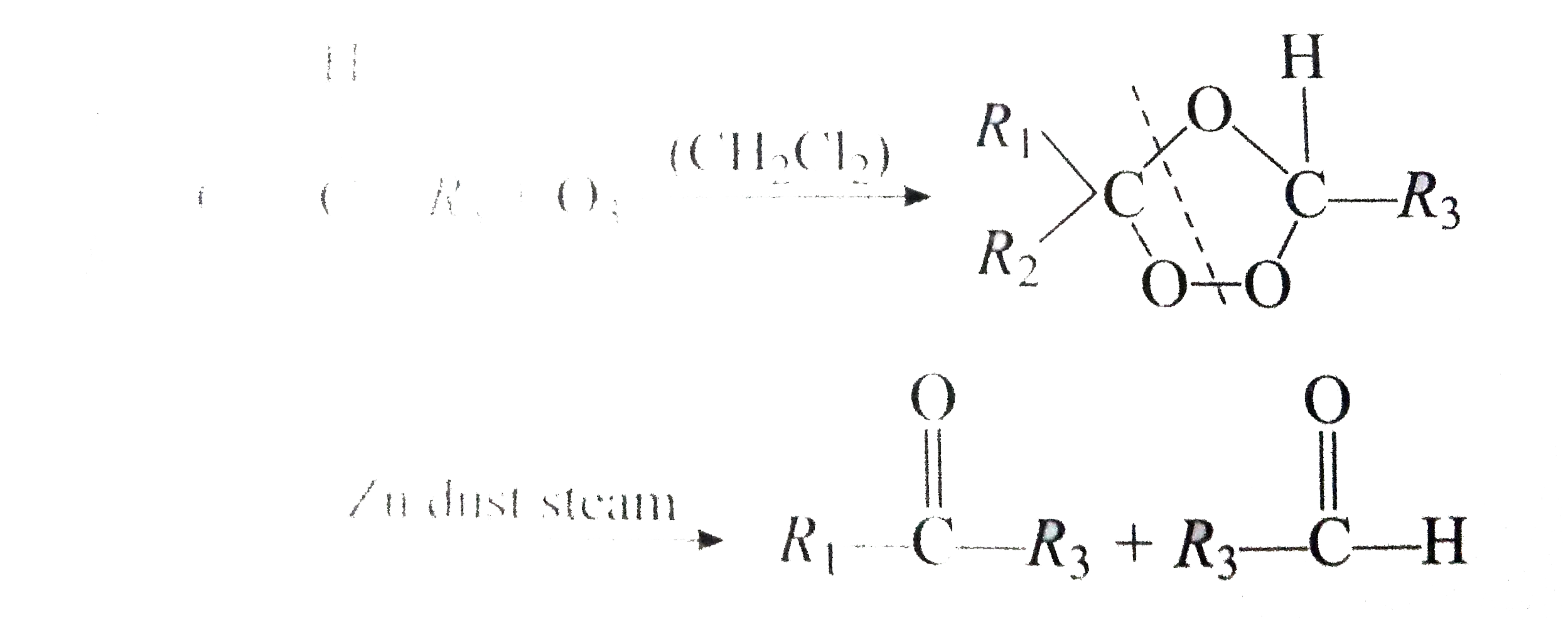
Which of these compounds give glyoxal only on ozonolysis?A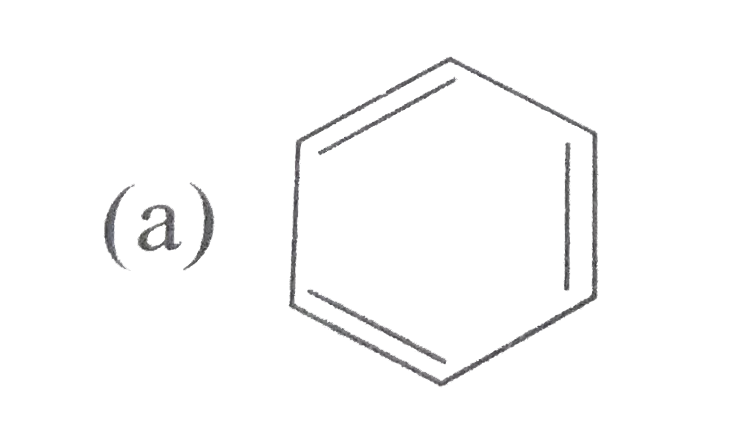 B
B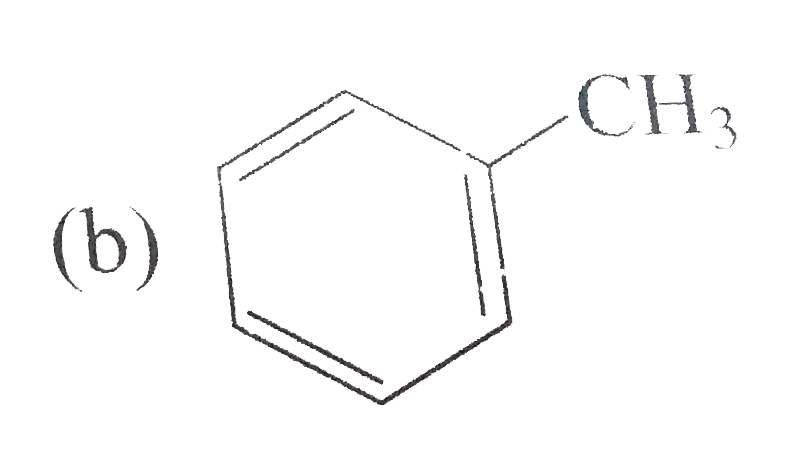 C
C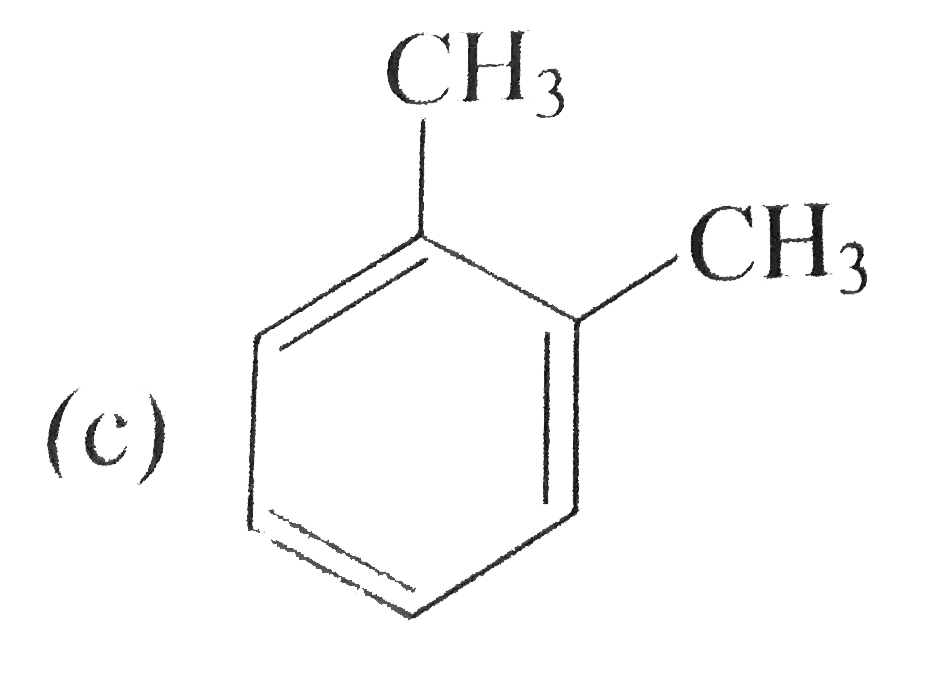 DAll of these
DAll of these - Question 2 - Select One
Oxidation without clevage of sigma bond takes place in alkenes.

Presence of unsaturation in alkenes is detected by using Baeyer's reagent. Alkenes decolourise pink colour of Baeyer's reagent. In presence of Baeyer's reagent, 'syn' addition of -OH groups takes place on both carbons of double bond. The net reaction can be given as,
R−CH=CH−RKMnO4−−−−→OH−R−OH∣CH−OH∣CH−R
Ozonolysis of alkenes gives ozonide, which on further hydrolysis gives aldehyde and/ or ketone.
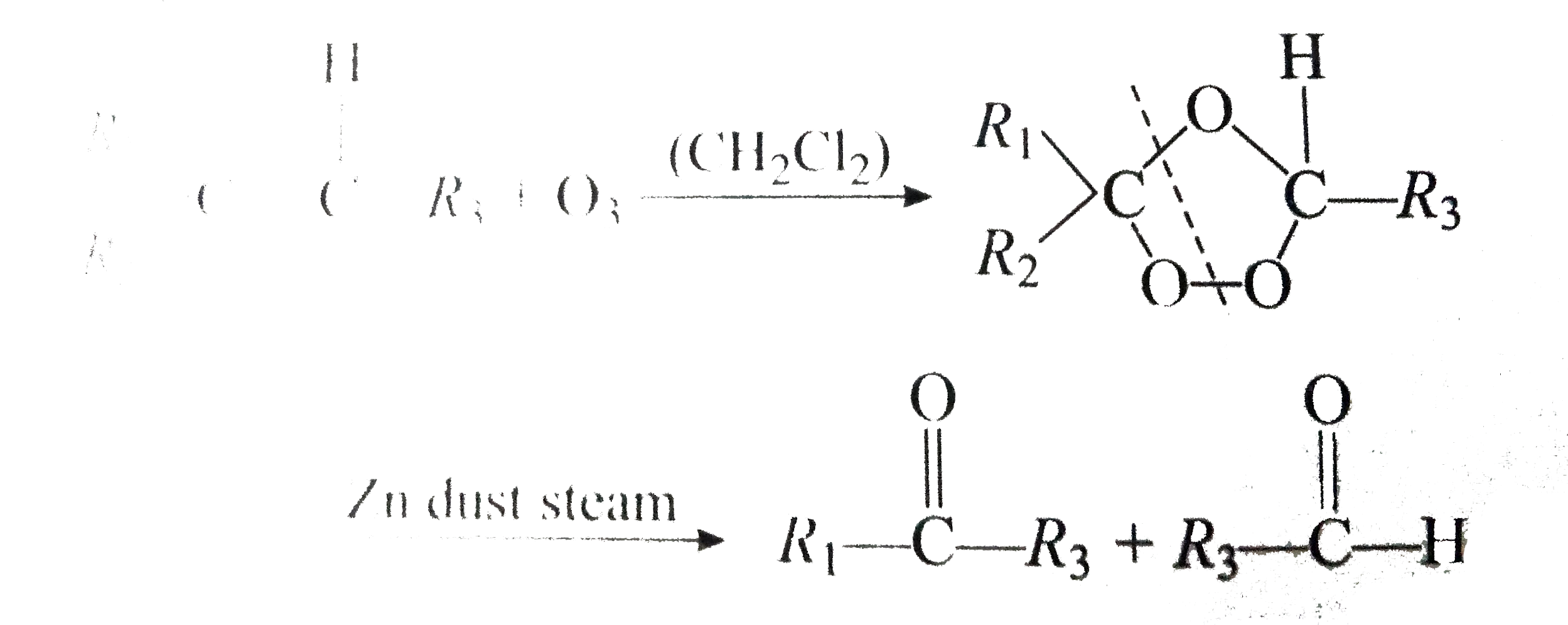
Product of ozonolysis gives information about:AconfigurationBconformationCboth of theseDnone of these - Question 3 - Select One
Oxidation without clevage of sigma bond takes place in alkenes.

Presence of unsaturation in alkenes is detected by using Baeyer's reagent. Alkenes decolourise pink colour of Baeyer's reagent. In presence of Baeyer's reagent, 'syn' addition of -OH groups takes place on both carbons of double bond. The net reaction can be given as,
R−CH=CH−RKMnO4−−−−→OH−R−OH∣CH−OH∣CH−R
Ozonolysis of alkenes gives ozonide, which on further hydrolysis gives aldehyde and/ or ketone.
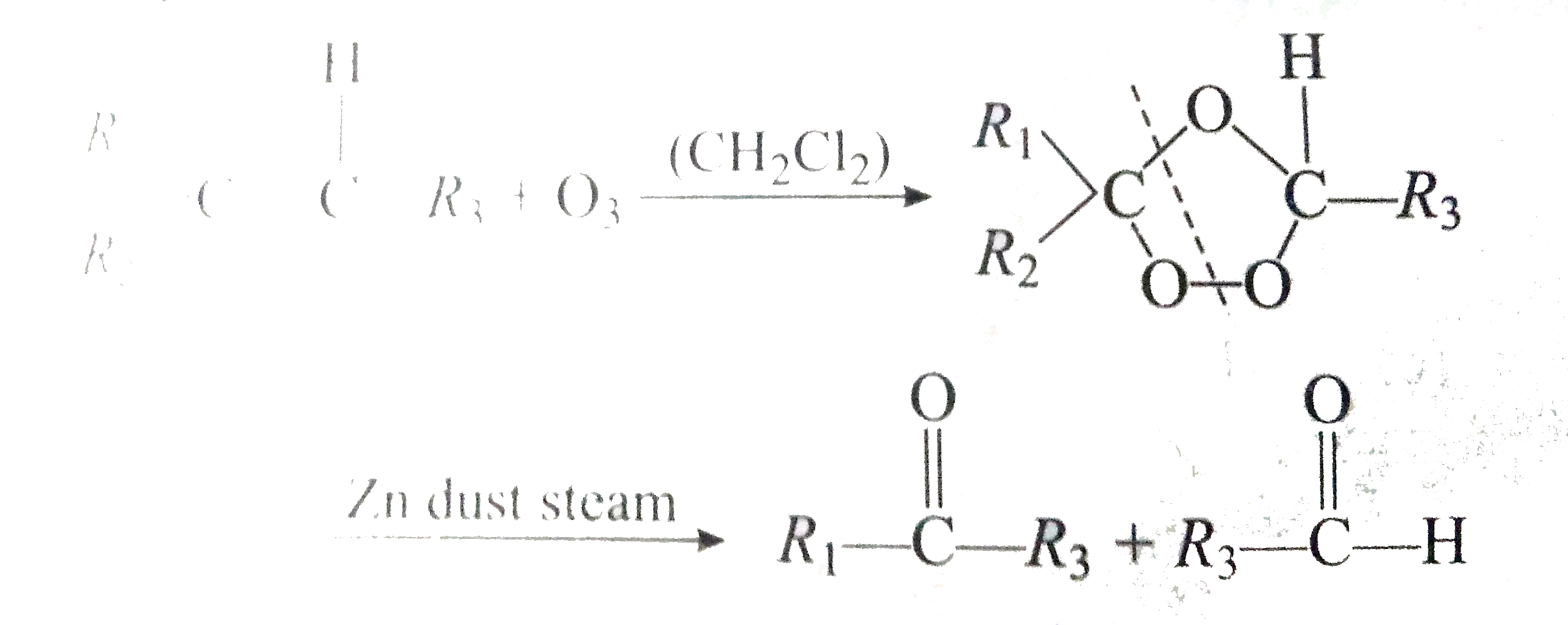
Which of the following will give only formaldehyde on ozonolysis?AH2C=CH2BCH3−CH=CH2CCH3−CH=CH−CH3D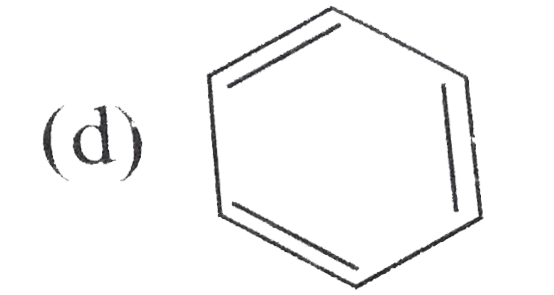
Decolourisation of baeyer's reagent indicates the presence of
View SolutionThe number of meso form of the given compound (A) is
CH3−OH∣CH−OH∣CH−OH∣CH−CH3View SolutionR−O∣∣C−O−Hx−−→R−CH2−OH
X can beView SolutionCH3−OH∣CH−O∣∣C−CH2−CH3 will respond to
View SolutionThe IUPAC name of CH3−OH∣C∣CH3−CH2−OH∣CH−CH3 is
View Solution

